
A book is a medium for recording information in the form of writing or images, typically composed of many pages bound together and protected by a cover. The technical term for this physical arrangement is codex. In the history of hand-held physical supports for extended written compositions or records, the codex replaces its predecessor, the scroll. A single sheet in a codex is a leaf and each side of a leaf is a page.
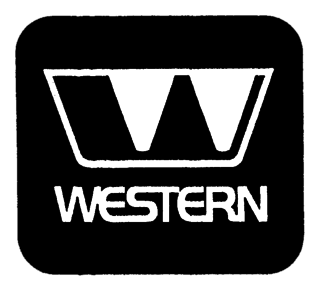
Western Publishing, also known as Western Printing and Lithographing Company, was a Racine, Wisconsin, firm responsible for publishing the Little Golden Books. Its Golden Books Family Entertainment division also produced children's books and family-related entertainment products. The company had editorial offices in New York City and Los Angeles, California. Western Publishing became Golden Books Family Entertainment in 1996. As of 2013, Little Golden Books remains as an imprint of Penguin Random House.

Leaves of Grass is a poetry collection by American poet Walt Whitman. Though it was first published in 1855, Whitman spent most of his professional life writing and rewriting Leaves of Grass, revising it multiple times until his death. There have been held to be either six or nine individual editions of Leaves of Grass, the count varying depending on how they are distinguished. This resulted in vastly different editions over four decades—the first edition being a small book of twelve poems, and the last, a compilation of over 400.

Print on demand (POD) is a printing technology and business process in which book copies are not printed until the company receives an order, allowing prints of single or small quantities. While other industries established the build to order business model, "print on demand" could only develop after the beginning of digital printing, because it was not economical to print single copies using traditional printing technology such as letterpress and offset printing.
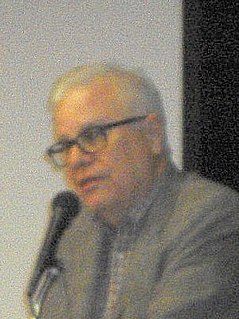
Louis Whitley Strieber is an American writer best known for his horror novels The Wolfen and The Hunger and for Communion, a non-fiction account of his alleged experiences with non-human entities. He has maintained a dual career of author of fiction and advocate of paranormal concepts through his best-selling non-fiction books, his Unknown Country web site, and his podcast, Dreamland.
A vanity press or vanity publisher, sometimes also subsidy publisher, is a publishing house which authors pay to have their books published. Where mainstream publishers aim to sell enough copies of a book to cover their own costs, and typically reject a majority of the books submitted to them, a vanity press will usually publish any book for which an author is willing to pay their fees. Professionals working in the publishing industry make a clear distinction between vanity publishing and self-publishing, which has a long and distinguished history.

The yellow pages are telephone directories of businesses, organized by category rather than alphabetically by business name, in which advertising is sold. The directories were originally printed on yellow paper, as opposed to white pages for non-commercial listings. The traditional term "yellow pages" is now also applied to online directories of businesses.

Room 222 is an American comedy-drama television series produced by 20th Century Fox Television that aired on ABC for 112 episodes, from September 17, 1969, until January 11, 1974. The show was broadcast on Wednesday evenings at 8:30 (EST) for its first two seasons, before settling into Friday evenings at 9:00, following The Brady Bunch and The Partridge Family, and preceding The Odd Couple and Love, American Style.

A blurb is a short promotional piece accompanying a piece of creative work. It may be written by the author or publisher or quote praise from others. Blurbs were originally printed on the back or rear dust jacket of a book, and are now also found on web portals and news websites. A blurb may introduce a newspaper or a book.
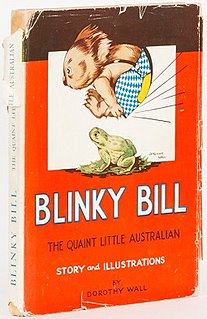
Blinky Bill is an anthropomorphic koala and children's fictional character created by author and illustrator Dorothy Wall. The character of Blinky first appeared in Brooke Nicholls' 1933 book, Jacko – the Broadcasting Kookaburra, which was illustrated by Wall. Wall then featured Blinky Bill in a series of her own books, including Blinky Bill: The Quaint Little Australian, Blinky Bill Grows Up, and Blinky Bill and Nutsy. The books are considered quintessential Australian children's classics, and have never been out of print in Australia.
A bestseller is a book or other media noted for its top selling status, with bestseller lists published by newspapers, magazines, and book store chains. Some lists are broken down into classifications and specialties. An author may also be referred to as a bestseller if their work often appears in a list. Well-known bestseller lists in the U.S. are published by Publishers Weekly, USA Today, The New York Times and The Washington Post. Most of these lists track book sales from national and independent bookstores, as well as sales from major internet retailers such as Amazon.com and Barnes & Noble.
In comics in the United States, a trade paperback is a collection of stories originally published in comic books, reprinted in book format, usually presenting either a complete miniseries, a story arc from a single title, or a series of stories with an arc or common theme.
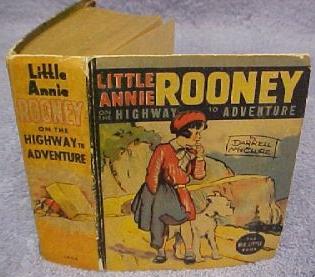
The Big Little Books, first published during 1932 by the Whitman Publishing Company of Racine, Wisconsin, were small, compact books designed with a captioned illustration opposite each page of text. Other publishers, notably Saalfield, adopted this format after Whitman achieved success with its early titles, priced initially at 10¢ each, later rising to 15¢.

Whitman Publishing is an American book publishing company which started as a subsidiary of the Western Printing & Lithographing Company of Racine, Wisconsin. In about 1915, Western began printing and binding a line of juvenile books for the Hamming-Whitman Publishing Company of Chicago. A few years later Hamming-Whitman went bankrupt, and Western took over the company, found success in selling the inventory of low-cost juvenile books, and formed the Whitman Publishing Company. Whitman now primarily produces coin and stamp collecting books and materials. The company is owned by Anderson Press.
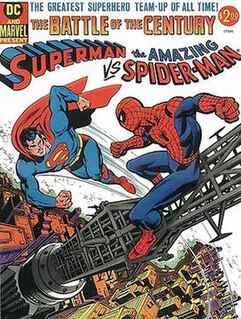
Superman vs. The Amazing Spider-Man: The Battle of the Century is a comic book jointly published by Marvel Comics and DC Comics in March 1976. It was the second co-publishing effort between DC Comics and Marvel Comics following their collaboration on MGM's Marvelous Wizard of Oz, and the first modern superhero intercompany crossover.
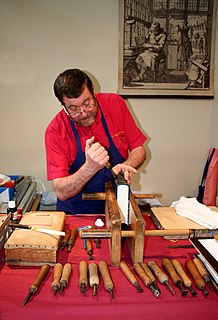
Bookbinding is the process of physically assembling a book of codex format from an ordered stack of paper sheets that are folded together into sections called signatures or sometimes left as a stack of individual sheets. Several signatures are then bound together along one edge with a thick needle and sturdy thread. Alternative methods of binding that are cheaper but less permanent include loose-leaf rings, individual screw posts or binding posts, twin loop spine coils, plastic spiral coils, and plastic spine combs. For protection, the bound stack is either wrapped in a flexible cover or attached to stiff boards. Finally, an attractive cover is adhered to the boards, including identifying information and decoration. Book artists or specialists in book decoration can also greatly enhance a book's content by creating book-like objects with artistic merit of exceptional quality.
Self-publishing is the publication of media by its author without the involvement of an established publisher. The term usually refers to written media, such as books and magazines, either as an ebook or as a physical copy using POD technology. It may also apply to albums, pamphlets, brochures, games, video content, artwork, and zines. Web fiction is also a major medium for self-publishing.

The following outline is provided as an overview of and topical guide to books:

Passionate Journey, or My Book of Hours, is a wordless novel of 1919 by Flemish artist Frans Masereel. The story is told in 167 captionless prints, and is the longest and best-selling of the wordless novels Masereel made. It tells of the experiences of an early 20th-century everyman in a modern city.
William Joseph Johnston was an American novelist, primarily known for authoring tie-in novels, although he also wrote non-fiction books and novels unrelated to specific motion pictures or television series.













